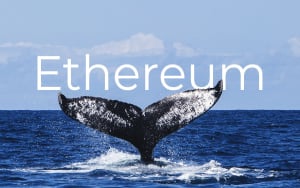
Recently Raul Jordan of Prysmatic Labs development studio unveiled the latest progress updates on the Ethereum (ETH) 2.0 public mainnet launch.
More clients, more stability
According to Mr. Jordan, the Schlesi testnet environment that merged the functionality of the Lighthouse and Prysm validators is now joined by ConsenSys' Teku Java implementation. As a result, the new three-client testnet united 25-30 peers and 240 validators.
I just published Eth 2.0 Dev Update #49 — ‘Multiclient Testnet + Security Audit’ https://t.co/g1It4Hboah @prylabs #Ethereum
— Raul Jordan (@raulitojordan) May 8, 2020
Mr. Jordan outlined that the system performs better than expected. Also, the Ethereum (ETH) 2.0 product has chosen a security audit vendor.
The Quantstamp cybersecurity team was chosen as the official security auditor. So, every element of code will be carefully checked to avoid any flows.
Furthermore, the graphic user interface (GUI) for Windows is delivered to on-board future Topaz contributors with no experience with command prompts or Linux.
Community-driven efforts
As reported by the Ethereum (ETH) 2.0 community, the Prysmatic Labs Topaz testnet environment validation instrument can co-exist with three nodes of the current Ethereum (ETH) network on one machine.
Haters will say it's photoshopped
— Harry Glynn (@harrycanuck) May 11, 2020
Huge thank you to @DAppNode and everyone else for making it possible to run not 1, not 2, but 3 Ethereum nodes on the same machine!
With a @prylabs Eth 2 testnet validator!
Can't wait for Eth 2 ? pic.twitter.com/J9WMy3z65V
Ethereum (ETH) developers around the globe are guessing which operations platforms will allow running Ethereum (ETH) 2.0 nodes. FreeBSD and RISC-V have already been mentioned.
I'd love to see #eth2 run on some whacky platforms. Maybe:
— Michael Sproul (@sproulM_) May 10, 2020
* FreeBSD
* Linux on seL4
* RISC-V
Any other ideas?
It is worth noting that Ethereum (ETH) 2.0 is a proof-of-stake version of the Ethereum (ETH) network. It may be rolled out this year to replace mining with staking and split the single consensus into a couple of shards.
The minimum stake for validating ETH2 transactions is 32 ETH. That said, according to some analysts, during Phase 0 (Beacon chain, the initial stage of the ETH2 roll-out) early birds may enjoy high annual yields of 17-20%.

 Dan Burgin
Dan Burgin Vladislav Sopov
Vladislav Sopov U.Today Editorial Team
U.Today Editorial Team